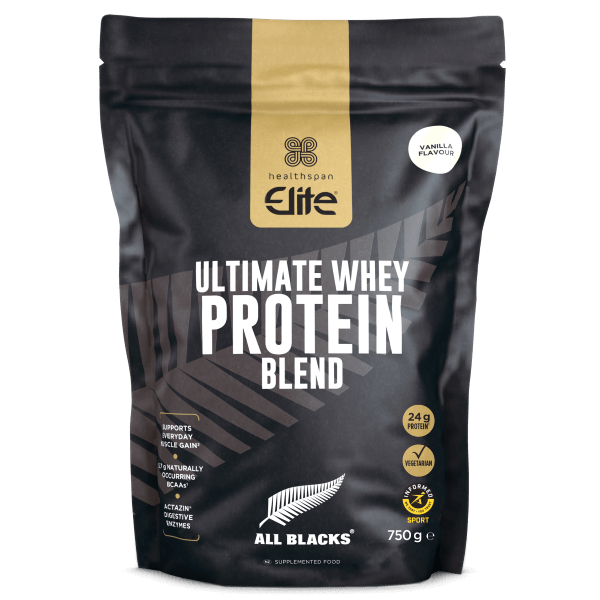Media coverage of the benefits of weight training has stepped up, filled with muscle-building ideas for men and women based around 'the perfect lean physique'. People are now looking to improve their appearance and sports performance by implementing weight training into their gym routine. But how do you actually boost performance, and build your body to the best it can be?
How does weight training work?
Muscle growth - sometimes known as hypertrophy - is the development of mass, density, shape, and function of muscle cells. This adaptation allows the muscle to meet exercise or function-induced stress. By including weight training in your programme, you will notice muscle growth. This growth is due to an increase in the number of myofibrils, connective tissue, and water.
Although growth can occur in all muscle fibre types, these different types vary in their potential for growth. The muscle fibres used in short bursts of activity, known as fast-twitch fibres, are more likely to grow with intense strength training compared to slow-twitch fibres, the ones used for endurance. This may be one of the reasons sprinters tend to be 'bigger' and more muscular, than endurance athletes like long distance runners. It's also why heavier loads tend to stimulate more muscle growth than light loads.
But what affect does this have on my look and performance?
If you simply engage in cardio training you would begin to lose body fat, but in the long run this often leaves us with what's known as a 'skinny fat' appearance. Why is this? Muscles respond to the demand we put on them. Ask your muscles to lift a heavy weight for a certain number of repetitions and your muscles will become stronger and grow. Ask your muscles to do very little work whilst you sweat on a cross-trainer, and they will become weak due to low demand, resulting in that 'skinny fat' appearance. More on that later.
There are many health benefits associated with including weight training in your weekly exercise programme. The first, and perhaps most obvious, is becoming physically stronger. This may sound like a given, but by becoming stronger, not only do your muscles grow but so will your bones and tendons. This reduces the risk of injuries and medical conditions like osteoporosis.
Secondly, muscle training can help to improve your agility. Speed, power, and coordination are important in general day to day activities as well as sports. Weight training improves trunk strength and increases power output, by encouraging a high amount of force over a period of time (for example, a high rep range workout) and can aid speed and strength, performing a full body lift quickly and explosively.
Finally it can also benefit function. Larger muscles are often stronger muscles, leading to improved daily functioning in most individuals. Muscle is metabolically active, and affects the way the body handles nutrients. For instance, people who are more muscular (especially combined with lower body fat) typically have better insulin control, which lessens the risk of developing type 2 diabetes.
So, if I weight train, I become leaner and muscular?
Not quite. Subjectively, muscle growth improves the appearance of the body. Women who gain muscle mass while remaining relatively lean appear tighter, firmer, and more toned, whereas men who gain muscle mass while remaining lean appear stronger, larger, and more athletic.
But what happens if you weight train five times a week without seeing results? What happens if you are still carrying extra body weight, or you still feel heavy or fatigued, or you don't feel like you are recovering well from the sessions? Now it's time to dial down our nutrition. What we do in the gym is only 40% of our results. The rest has to be done in the kitchen on a day-to-day basis. The keyword here is consistency.
Muscle vs Fat
Weight training kicks up your metabolism, enabling you to burn more calories throughout the day whilst mending and repairing the muscles damaged in the gym. By activating fast-twitch muscle fibres through weight training, you are reducing body fat and creating a toned, lean body. Even at rest. You are improving whole body metabolism.
Try to recover and repair by eating 1.5g- 2g of protein per kilo of body weight. By using his strategy you can calculate the remaining fat and carbs using an online macro calculator. A good guideline to use if you are wanting to gain muscle mass would be to add around 500 calories to your menu. Those looking to lose weight and reduce body fat should lower their daily calories by 300-500.
Fear not ladies, weights and protein won't make you bulky. Your muscles will get stronger with weight training, but that doesn't mean bigger. If you pump yourself full of testosterone and eat a calorie surplus diet then you will grow and have a 'bulky' appearance. However, this 'bulk' will be the extra layer of body fat covering the muscle. Simply weight training and being more savvy with your diet will not result in this.
Weight lifting coupled with a healthy diet of lean cut meats, vegetables, fruit, and some good starchy carbs will help your muscles gain strength and become more dense. You will burn fat surrounding the muscle, revealing the toned look that you have been working so hard for. According to the National Institutes of Health, the normal range of testosterone is 30 to 95 nanograms per decilitre (ng/dL) for women and 300 to 1,200 ng/dL for men. It is mostly testosterone which helps with physiological changes in the body. So women cannot expect 'mass gains' naturally, and for men of course it takes time to build muscle. Training, nutrition, and consistency are key.
Keeping your heart healthy
Weight training has been found, by a study conducted by researchers at the College of Health Sciences' Department of Health, Leisure and Exercise Science at Appalachian State University, to decrease blood pressure by 20% after a 45 minute moderate-intensity strength training session. Compliment this with a healthy and nutritious diet and you won't be clogging your arteries so you'll be looking at a healthy future, with a reduced risk of illness.
Blood sugar levels
Whether you have diabetes or risk factors, according to a study published at the Nature Medicine website, weightlifting can help regulate blood glucose. Researchers of the study report that weight training encourages the growth of white muscle, which aids in lowering blood glucose because it uses glucose for energy. Mammals, like poultry, have different colours of muscle ranging from red to white. Red muscle, which uses fat oxidation to generate energy, is more prevalent in endurance athletes, such as marathon runners, while white muscle is abundant in weightlifters and sprinters.
Think of your body like a car. If you were driving it every day, building up a few miles and wearing it out, you wouldn't pull into a garage and fill it with the wrong fuel. The same applies to your body. With the hard work you put in at the gym and the money spent on gym membership, working to the right programme and for some, personal training, why would you then 'refuel' at a drive through or fast food restaurant?
When you are weight training you are actually tearing the muscles. In order for them to repair, become stronger, and increase mass, they have to be repaired with a healthy and nutritious diet. By eating well, training hard, and finding time for recovery, you are guaranteed to build muscle. Be malnourished, sedentary, and stressed, and you won't.
On the flip side, people who restrict their calories (by 'dieting') without also doing resistance training do lose weight, but this will lead to an even distribution of muscle and fat - again leading to skinny fat appearance. Indeed, sometimes calorie restrictors who don't exercise end up fatter percentage-wise than when they started!
So, if you are looking to improve your sport performance, drop a few pounds, or are simply looking to keep your training interesting, then grab yourself some weights. It is always advisable to book yourself a couple of personal training sessions to ensure your form is correct and to write you an effective programme. Begin weight training two to three times a week, and change as necessary and you will be on the road to hitting your goals in no time: as long as you combine this with a nutritious diet.

Elite All Blacks Ultimate Whey Protein Blend
Protein powder co-created with the All Blacks
- 24g protein per serving to support muscle growth
- Added protease to break down protein for better absorption
- Available in vanilla, strawberry and chocolate. Low in sugar







